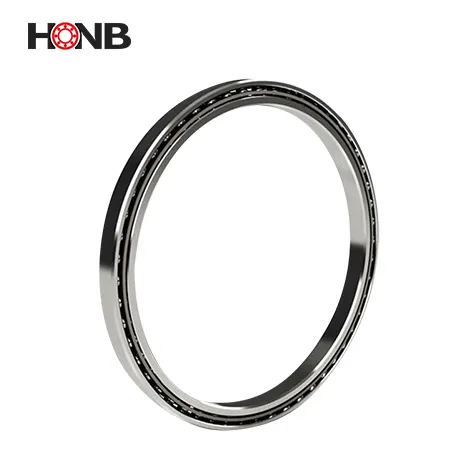The cylindrical rollers of the HRAU series of uniform cross-section thin-walled cross roller bearings are arranged crosswise on the V-shaped raceway, and the rollers are separated by isolation blocks. This cross-arranged roller structure allows a single bearing to withstand various loads such as axial loads, radial loads, and overturning moments. In addition, since the inner and outer rings are both integral structures, they can be used for inner ring rotation or outer ring rotation.
Because the outer dimensions are minimized to the maximum, and the bearings have high rigidity, rotation accuracy, and composite load-bearing capacity, they are most suitable for the joints or rotating parts of industrial robots, direct drive motors, medical equipment, measuring instruments, and other fields.

The cylindrical rollers of the HRAU series of uniform cross roller bearings are arranged crosswise on the V-shaped raceway, and the rollers are separated by isolation blocks. This cross-arranged roller structure allows a single bearing to withstand various loads such as axial loads, radial loads, and overturning moments. In addition, since the inner and outer rings are both integral structures, they can be used for inner ring rotation or outer ring rotation.

Deep groove ball bearings: C-type deep groove ball bearings are single-row deep groove ball bearings with extra-deep grooves on the inner and outer rings (raceway groove depth = 25% of the ball diameter).

Angular contact ball bearings: A-type angular contact ball bearings differ from C-type bearings in that they have sufficient radial clearance to form a sufficient contact angle to withstand axial loads. Due to their unidirectional load capacity, the bearings need to be symmetrically mounted with other bearings to set and ensure the contact angle, while minimizing their axial movement when subjected to alternating axial loads.
Four-point contact ball bearings: X-type four-point angular contact ball bearings differ from A- and C-type bearings in the shape of their ball grooves. The deep groove depth and four-point contact structure enable the bearings to withstand radial, axial and torque loads, similar to a back-to-back combination of a pair of A-type bearings.

